Dental Implants Everything You Need to Know About Bone Grafting
Bad Results or Not Diagnosed Properly
- Too many times I see patients who come in for an implant who say “I already had a bone graft done and just need the implant.”
- I take a look in the mouth, CT scan and say, ”You may have paid for a bone graft or had one done, but it wasn’t done properly or its been too long and you need more bone”
- Sometimes I see cases where they already had the implant placed and just want to get it restored with the crown but there’s definitely not enough bone surrounding the implant.
- This video will help you figure out what to look out for to make sure you get diagnosed properly and have the procedure properly done.
Bone Grafting
- Remember the CBCT (3D scan) will tell us your bone dimensions. Lets say you don’t have ideal bone dimensions. We cant change your bone density (how hard your bone is) but we can add more bone horizontally or vertically or both.
- Bone grafting – When we add more bone to your jaw
- When adding bone width, other than for sinus lifts, bone grafting is almost 100% of the time added to the outer edge of your jaw. The reason is that after you lose a tooth or you have disease, bone is always lost from the outer surface of your jaw bone because that’s where your bone is the thinnest. This is the bone that needs to be replaced so the implant can be placed in the correct spot.
- Many different types of bone grafting. Of course, they have different costs associated with it and invasiveness, recovery times, etc.

What If We DON’T Do a Bone Graft If Needed?
- Then we wont be able to place as long and wide of an implant as we need.
- Dentists will try to compromise by placing the implant in an area of more bone. This will result in the implant being out of position and affect how you’re chewing.
- If we place the implant where its supposed to be without the 2mm of bone on the outer edge, then we can experience further bone loss around the implants affecting the health and esthetics of the implant.
- In worst case scenarios, you can lose the implant.
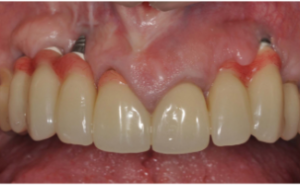
Bone Grafting? Sounds Expensive! Do I need it?
- If you’re talking about a front tooth, unless you want it looking terrible, then yes you100% do need a bone graft.
- Front dental implants can look fine now but develop issues in the future. Many times it has to do with the bone and gums.
- Your bone supports the gums. If you don’t have the proper bone around your implant, the gums wont look right and therefore your tooth crown will look terrible.

- As with many other things in life, prevention is cheaper and more predictable.
- Proper planning, execution, and prevention by having enough bone, proper implant sizing and accurate implant placement, will help give us this predictability.
- The problem is you have to bone graft before implant placement, or at the same time as implant placement.
- You CANNOT place the implant, realize later on down the road you don’t have enough bone, and then decided to try to add more bone at that time.
- Therefore it is critical you do the bone grafting correctly at the beginning.
- Also the health of your implant is based on having enough bone surrounding your implant. You want to have at least 2mm of bone on the buccal side and 2mm on the palatal or lingual side.
- In fact, if we’re talking about a front tooth, do not mess around and you must make sure you see somebody who’s very experienced at bone grafting and implant placement to ensure you get the best result.

Critical Factors for Determining Need for Bone Grafting
- 1. Are you missing your tooth? If so, how long? The longer you’ve been missing it or if you genetically had thin bone, then you will need a bone graft.
- 2. Is it a front tooth. You 100% should get a bone graft.
- 3. In regards to a back tooth, do you presently have the tooth? How easy will it be to extract it? The more difficult it is to extract the tooth, the more likely the more damage will occur to the bone in the area of the tooth, therefore requiring bone grafting.
- Sometimes in certain instances, there will be extensive bone loss from a very large gum disease infection, large root canal infection, trauma (car accident, punch to face etc) or tooth that is extremely difficult to remove that will destroy a lot of bone in the area. In these cases, extensive bone grafting called Guided Bone Regeneration (GBR) will be required. This is more invasive and more costly.
Thin Bone vs Thick Bone?
- Patients have different body types. They also have different bone and gum types. In dentistry, we refer to this as their ”biotypes.”
- Some people have thick biotypes while some people have thin biotypes
- Thick biotype: thick bone and thick gums. Its better to have a thicker biotype when it comes to dental implants. Its more predictable.
- Thin biotype: thin bone and thin gums. Patients like this tend to have more bone loss and recession of gums around dental implants unless they are properly bone and/or gum grafted.
Difficult to Extract Teeth Need Bone Grafting
- The problem is that the harder the extraction, the more likely more jaw boneneeds to be removed. the bone that is usually removed is bone on the sides of a tooth and bone on the buccal (cheek side) or facial (front side)
- Examples of teeth that are harder to remove are teeth that have very large cavities, root canaled teeth, very long roots, patients that have very dense bone.
- Large cavities – the part of the tooth above the gums will snap off leaving just the roots buried in the bone. The roots wont be able to be removed without drilling some bone away.
Root canaled teeth – the teeth are hollowed out making them much weaker and more likely to break during the extraction process. This leaves root fragments that are difficult to remove and result in bone removal.
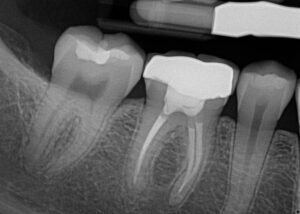
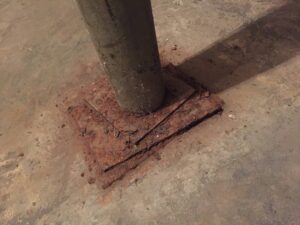
Very long roots – the longer the tooth roots and irregularly shaped the roots, the more difficult to remove the roots without removing a lot of bone also.
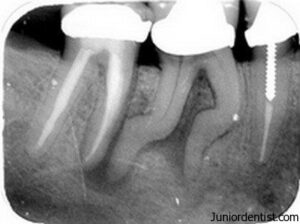
- Very dense bone – its obviously harder to remove something from concrete than it is to remove from something soft like dry wall.
- Long story short, the harder the tooth is to extract, the more likely that more bone will be removed during the extraction process. This results in more bone removal. Remember, you want as much bone around your future implant so you want to “bone graft” and replace the bone that was lost.
Bony Defects
- What if you lost bone from periodontal disease, trauma, or from a very difficult extraction.
- How easy it is to rebuild the bone depends on how well confined the bone can be when we place the bone graft.
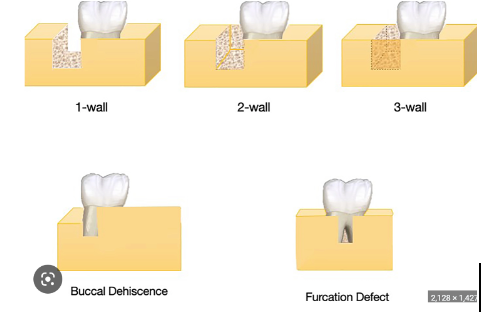
- If we pour wet concrete into a pothole, the concrete has nowhere to escape so it is easy to fill
- Imagine if we had 3 defined walls, the bone could only exit out the top. We put a membrane over it and as long as you don’t chew on it, the bone will heal great.
- Imagine if we had only 2 defined walls, it gets harder to confine the wet concrete and it wants to exit out the outside edge. This is why you have to be more careful to not distort the outer edge or the bone will move and the graft will fail.
- A one wall defect is even harder to contain the concrete.
What Kind of Bone Are We Adding?
- There are different types of options of bone to use.
- Autogenous – Your own bone. Typically harvested from your jaw or hip if we need a lot. More invasive if we need a lot of bone. Advancements have led to it not being used as its outdated. Tends to resorb more than other types of bone. However it’s a great option till for huge bone grafts needed from trauma, cancer, etc.
- Allograft – donated bone from human cadavers
- Xenograft – donated bone from other species such as pigs, cows, etc
- Alloplast – synthetic bone
What Bone Graft Typically Looks Like
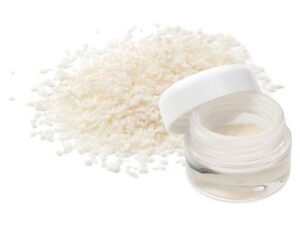
•Typically looks like large particles of sand (no matter if its allograft, xenograft, alloplast, etc)
The Different Bone Types Have Different Applications
- Most dentists use Allograft (sterile human cadaver bone) for most bone grafting
- Xenograft (bone from cows) tends to be used often for bone grafts in the sinus (sinus lifts) and for bone grafting on front teeth implants. It tends to remodel slowly and that’s its benefit.
- There’s so many details about this topic but I’m going to keep it relevant to what you need to know as a patient.
Membranes
- Bone grafting also requires membranes. Membranes are barriers that separate the bone graft from your gums.
- Bone heals 1/10 the speed of gums. As a result, the gums have a tendency towant to grow into bone grafted area unless you can barrier off the gums from infiltrating into the space. Therefore we use membranes.
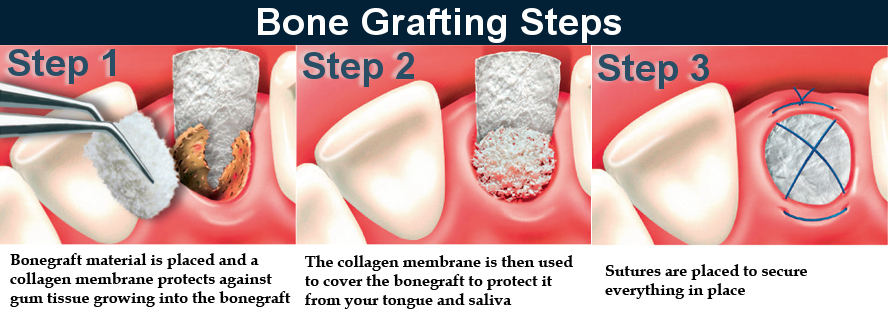
- Membranes come in Resorbable (dissolvable) and Non Resorbable (non dissolvable) options.
- Resorbable membranes are collagen membranes. There are some collagen membranes that are extremely short acting (dissolve in a few days). Do not use these for these bone grafting procedures. They are garbage. For some reasonsome dentists use these and they result in sub-par results
- Collagen membranes have options that expires after a month or after several months.
- Non resorbable membranes are used for more extensive bone grafting (Guided bone regeneration) that we will discuss later.
- Non resorbable membrane options include titanium mesh membranes, e-ptfemembranes, d-ptfe membranes. These are the most common non resorbable membranes in use today.
Sutures
- One final point when doing bone grafting procedures. Use non dissolvable sutures.
- The sutures should stay in for 3-4 weeks.
- What to look out for.. Make sure you get a bone graft done with a longer lasting membrane. Collaplug and Collatape (short acting collagen membranes) are useless for bone grafting and dissolve as if they’re toilet paper. Also for some reason some people use dissolvable sutures on top of the bone graft and they’re worthless. You will get a lot of bone spilling out of your socket with dissolvable stitches.
You must do your part! Follow the post op instructions closely to have the best results. The best technique and products are worthless if you don’t follow the instructions.
SUPER IMPORTANT POINT!!!
- To reiterate, bone graft is like wet concrete. You do not want to push on it or distort it during the healing period.
- Distorting it will cause the bone graft to FAIL!
- You would not want to move a healing broken bone. Same goes for bone grafts.
Types of Bone Grafting Procedures
•1. Socket Preservation – placing bone graft in a tooth socket (as pictured in bone grafting steps above)
•2. Onlay bone grafts – adding bone graft on the outer edge. It can be added in small amounts on the outer edge or in very large amounts due to extensive bone loss.

Bone Grafting at Time of Tooth Extraction (Socket Preservation)
- The most predictable type of bone grafting is done at time of tooth extraction.
- It is only the most predictable if you have all 4 walls of bone present.
- Remember we need to 100% of the time bone graft anterior (front) teeth at time of extraction.
- Remember for posterior teeth, you don’t 100% of the time need to bone graft but if you have thin bone OR if your tooth will be difficult to extract, then you absolutely should bone graft
- Typically takes 4 months of healing
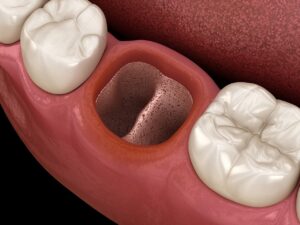
Onlay Bone Grafts
- 2 Types of Onlay bone grafts.
Small onlay bone grafts
large onlay bone grafts (Guided Bone Regeneration)
- Small onlay bone grafts – If you have enough bone to place your ideal implant in the ideal position, but may still need a little more bone to make sure you have the 2mm of bone on the buccal area (outer edge)
- Occurs at the same time of the implant placement.
- Typically take at least 4 months of healing.
- Sometimes in certain instances, there will be extensive bone loss from a very large gum disease infection, large root canal infection, trauma (car accident, punch to face etc) or tooth that is extremely difficult to remove that will destroy a lot of bone in the area. In these cases, extensive bone grafting called Guided Bone Regeneration (GBR) will be required. This is more invasive and more costly.
- The added bone must be protected from any pressure or movement from the gums. GBR done with a lot of bone is sometimes protected with special membranes like titanium mesh or titanium reinforced PTFE membranes.
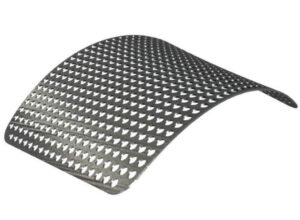
Guided Bone Regeneration
- This procedure is used to add significant amounts of bone horizontally. If bone was lost in a vertical dimension also, then you must use GBR.
- Vertical bone growth is very unpredictable. It is definitely harder for the surgeon to do. Quite frankly, I’ve done thousands of bone grafting procedures and find it one of the most unpredictable procedures we do.
- When we add significant amounts of bone, then its like I was going to add 100 pounds to my gut overnight. My skin would stretch and be very tense and then would eventually start to die off. This same problem occurs with guided bone regeneration.
- If we add a significant amount of bone, then the gums will be stretched significantly and cause too much tension and the gums will die and therefore the bone graft will fail.
- The gums must completely cover the bone graft during the healing process. If it doesn’t, then the bone graft will fail.
- The gums must not have tension (tightness) after the gums have been sutured. Too much tension always results in the gums opening up and bone graft failing.
- As a result a special type of incision must be made in your gums and muscles to release your gums to give it the slack to cover the newly added bulk of bone. However this results in significant swelling and potential discomfort.
- Guided bone regeneration is a very technique sensitive procedure. It is advisable to see a surgical specialist or somebody well versed in this procedure to ensure a good result.
- Non dissolvable sutures must be used.
- Long term collagen membranes can be used. Titanium reinforced or nonresorbable membranes are also a good option for extensive bone buildups.
- 5-6 months of healing must be allowed.
- Strict adherence must be given to the post op instructions.
Bone Grafting Has Limitations!
- Bone cannot be grown at will. There are biological limitations.
- You must work with an experienced surgeon when trying to build more extensive bone. Not all surgeons are equal. Some are better at placing implants, while others are amazing at building bone, others are building gums, etc.
- You must follow the post op instructions carefully! Bone graft waiting to heal is like waiting for concrete to set. You do not want to put pressure on the area, chew on the area, etc. The area should not be contacted at all.
Next Video
- If you want to get dental implants, what are the options?
- Can they be used to replace one tooth, multiple teeth, all your teeth?
- What are the costs associated with all those different options?

